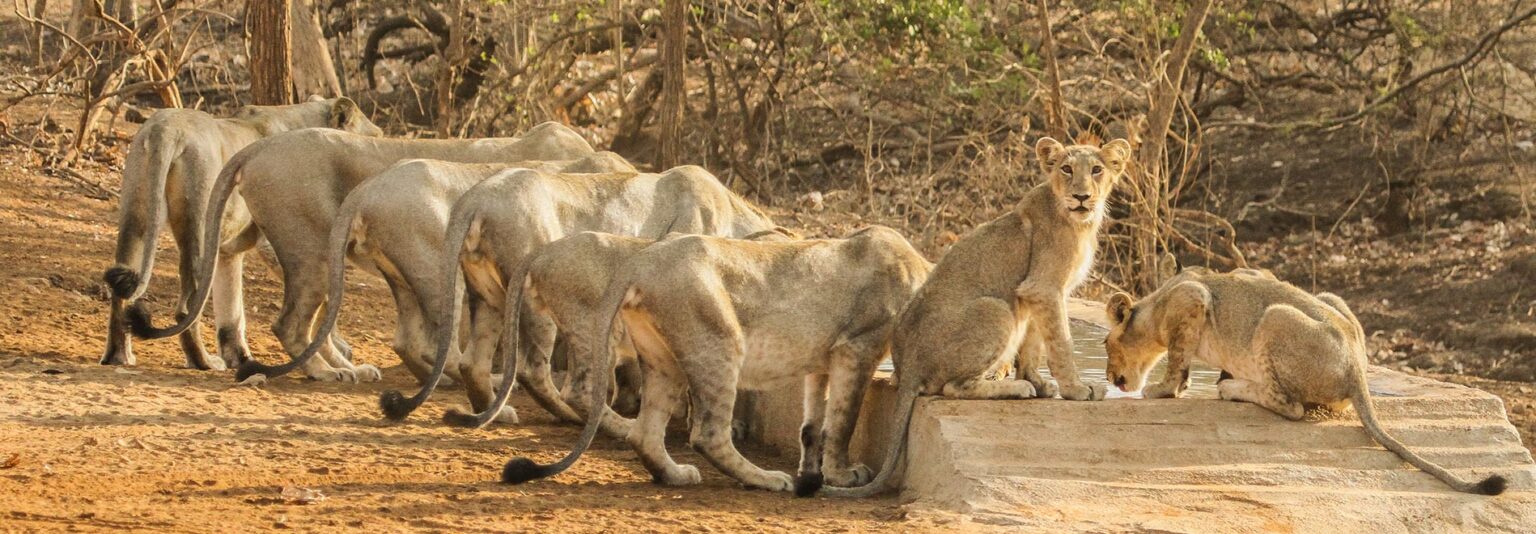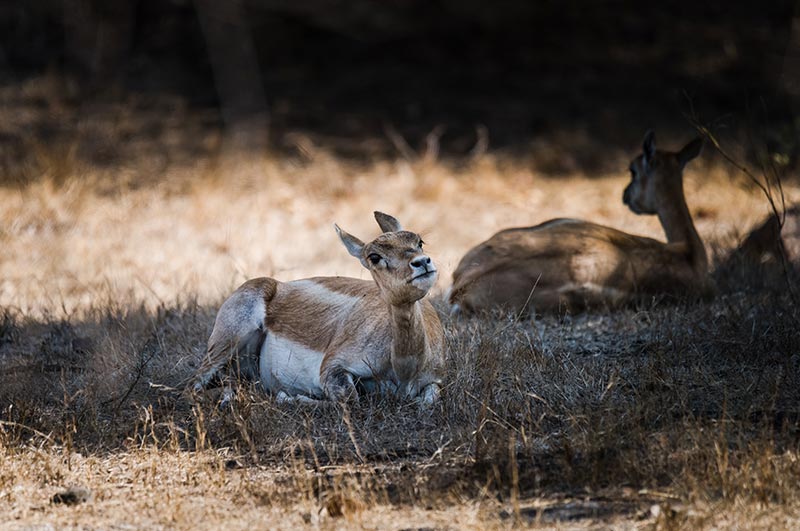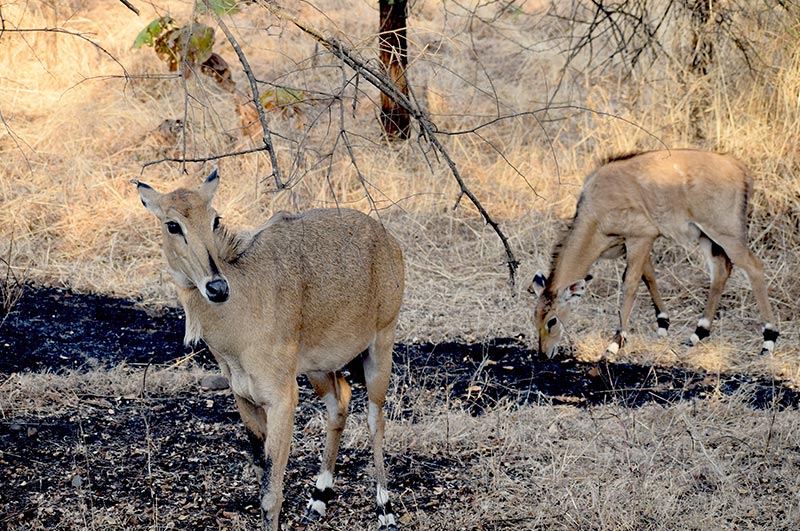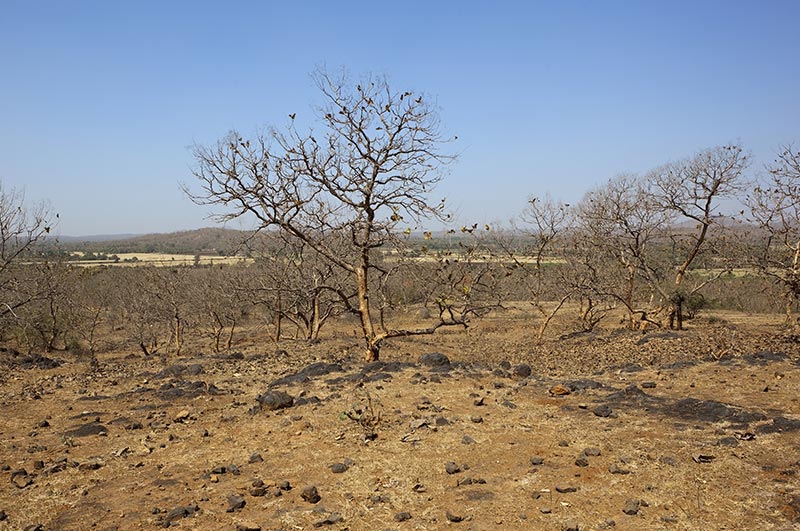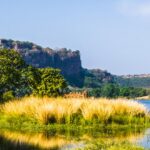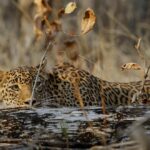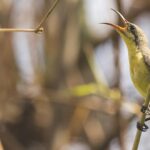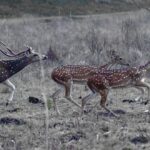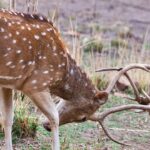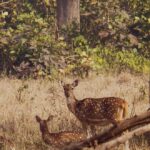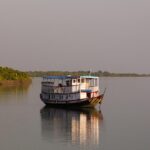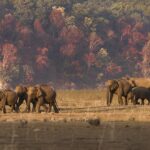Gir National Park: Come to witness the roar of the King of the Jungle
Visiting the state of Gujarat is like stepping out of a prism dispersing the taste of India into the rainbow with colours of vibrant culture, ancient traditions, eye-pleasing dance, soulful music, unique cuisine, unforgettable lingual and above all the wonderful treasure that the beautiful nature holds here.
Gir National Park is the perfect dwelling place for most of the wildlife creatures because of the presence of great environs and topography flourishing along this region. In Gir, you come across the history of humanity and time itself. The park guides you across a history as humanity was emerging, when humans coexisted with lions, before monuments, temples, mosques and palaces.
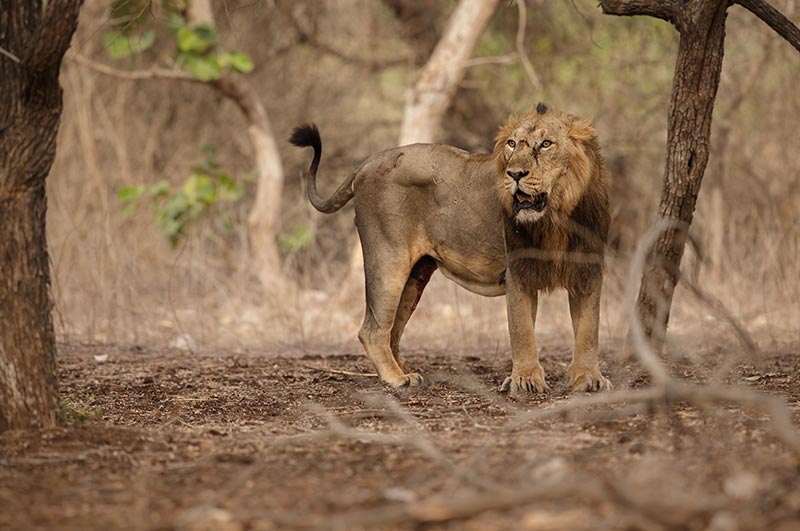
Geography of Gir National Park
The Gir National Park is also known as Sasan Gir. Gir National Park and Wildlife Sanctuary are situated at South-West of Saurashtra peninsular region. The mesmerising adobe of the majestic Asiatic Lions is located near Talala Gir in Gujarat. The place is very close to the world famous city of Shiva – Somnath.
Gir National Park is not just a wildlife sanctuary, but also a flourishing forest. The whole Sasan- Gir National Park is spread across an area of 1412 sq. km out of which about 258 sq. km is the fully protected area (the national park) and 1153 km² is the Sanctuary.
Established in 1965, Gir National Park was once the hunting ground for the Britishers during their reign in India where they would hunt tigers and lions along with several Rajas and Maharajas of the region. The hunt of the fiercest beasts of the Jungle was considered a matter of pride and courage.
The climate of Gir National park
The climate in Gir National Park varies across the year. The summers here are brooding hot with temperature rises to a scorching 43°C. The winters are also harsh as the temperature plummets to about 10°C.
Besides extreme summer and winter, Gir National Park enjoys a tropical monsoon climate. The forest welcomes monsoon by mid-June and bids adieu to it by September. The rain blisses the national park with the maximum downpour, in the month of July and August.
Gir National Park Overview
| Feature | Description |
| Location | Gujarat, India |
| Area | Approximately 1,412 square kilometers (545 square miles) |
| Established | 1965 |
| Wildlife Sanctuary | Since 1970 |
| Known For | Asiatic lions |
| Best Time to Visit | November to February (dry season) |
| Activities | Jeep safaris, guided nature walks, birdwatching |
Best time to Visit Gir National Park
The Gir National Park is open for tourism from 16th October to 15th June every year, except the months of monsoon i.e. the months between June and October.
The best months to explore the exquisite vegetation and wildlife of Gir National Park is during the winter season, from the months of November to March, as the weather is cool and comfortable. Also, the chances of sighting the wild animals are greater during this time.
How to reach Gir National Park?
Gir National Park is one of the youth brands of Global Tourism India, thus it has well-developed and groomed transportation circuit around it. One can reach here via the different medium.
- By air – The nearest airport to the Gir National Park is located in Diu at a distance of 92Kms. The other nearby airport is in Rajkot at about a distance of 160kms.
- By rail – The nearest Railhead to the Sasan Gir is in Junagadh. From here, the tourist can relish the 65km long road trip to reach Gir National Park.
- By road – The state of Gujarat offers special bus and taxi services from nearby cities like Ahmedabad to take tourists to Gir National Park.
Best places to stay near Gir National Park
The state of Gujarat is known for its people, their hospitality and amazing potential to excel in trade. Accommodation is not going to be an issue when you visit Gir National Park. The place has hotels, wildlife resorts, lodges available in all range of budgets.
Here we have listed few accommodations for you to stay during your wildlife adventure to Gir National Park:
- Gir Birding Lodge
- Fern Gir Resort
- The Taj Gateway Hotel
- The Maneland Jungle Lodge
- Lion Safari Camp
- Saavaj Resort
- Vanvaso Resort
- Sukhsagar Gir Resort
- Woods at Sasan
Flora of the Gir National Park
The Gir National Park thrives with unique and lush vegetation. The versatility of Gir can be witnessed as most of the area is comprised of rugged hills, with high ridges and densely forested valleys, wide grassland plateaus, and isolated hilltops.
Half of the forest is comprised of teak forest, with other floral varieties like khair, dhavdo, timru, amla, and many others. While the other half of the forest is stuffed with non-teak forest, comprising of samai, simal, khakhro and asundro jambu, umro, amli, vad and kalam; mostly broadleaf and evergreen trees. The other characteristic feature of the park is the presence of open scrub and savannah-type of grassland.
The Gir National Park thrives with Dudhlo (Writia tinctoria), khair (Acacia catechu), Ber (Acacia bellerica), Desi baval (Acacia nilotica), Dhavdo (Anogeisis latifolia), Hermo (Acacia leucophloea), Sadad (Terminalia tomentosa), Timru (Diospyros melanoxylon) , Ashitro (Bauhinia recemosa), Saledi (Boswellia serrata), Modad (Lannea coromandelica), Khakhro (Beautia monosperma) etc.,
Fauna of Gir National Park
The Gir National Park never ceases to surprise with the tremendous varieties of wild creatures which are free to roam in the land of the mighty Asiatic lion.
The rich biodiversity spot has about 32 species of mammals, 300 species of birds and 26 species of reptiles and thousands of species of insects. Isn’t that fascinating? The wildlife lovers can get a fabulous opportunity to witness around 2,375 distinct fauna species of Gir National Park. That’s an incredible account!!
To list a few residents of Gir National Park we have – Asiatic lions, Indian Leopards, Indian Cobras, Sloth bears, Jungle cats, Golden Jackals, Indian Palm Civets, Striped Hyenas, Indian Mongoose, Ratels, Desert cats, Rusty-spotted cats, Chital, Nilgai (or Blue bull), Antelope, Sambar, Four-horned Chinkara, Wild boar, Blackbucks, Porcupine, Hare, Marsh crocodile hir Tortoise and the Monitor Lizard.
The major birds of the Gir National Park include Crested Serpent Eagle, Brown Fish Owl, Crested Hawk-eagle, endangered Bonelli’s Eagle, Rock Bush-Quail, Indian Eagle-Owl, Black-headed Oriole, Pygmy Woodpecker, Crested Treeswift and Indian Pitta.
Safari at Gir National park
The Gir National Park offers an audacious Jeep Safari to its visitors. A ride in the wild jungle is heart pumping and full of adventures. You have to keep your eyes, ears and consciousness awake to enjoy every bit of your trip as you never know what animal might come along the way.
The unmatched wilderness of Gir National Park offers an astounding sight of stunning flora and fauna and uncommon wild animals together over the spectacular alleys of Gir National Park. To make your experience more enthralling, the Gir Forest Department also organizes “Lion Shows” and they make sure that you can see the lions at close range so they send trackers early morning on a mission to the located places and tempt them with live baits.
Safari Timing:
- 06:30 AM to 08:30 AM,
- 08:30 AM to 10:30 AM and
- 03:00 PM to 05:30 PM.
Apart from this tourists can engage in various other pursuits like Bird Watching Devliya Safari Park, participating in Maldharis Tribe and Siddis Tribal Visit and witnessing Crocodile Breeding in the park.
Useful tips for your trip to Gir National Park
- Do not rouse, feed, or disturb wildlife
- No flash or intrusive photography
- Picking plants or insects prohibited. Plucking leaves is a crime.
- No walking or hiking allowed in the park, for safety; always travel in vehicles, preferably with a guide.
- Sit still as sudden movement can scare and disturb wild animals.
- No littering, it is a punishable offence
- Carry lots of water to hydrate yourself.
- Carry field guides to learn about your surroundings.
- Lions are most active early in the morning, and hence, the early morning safaris are ideal for lion viewing.
- Be patient if you do not get to see any wildlife inside the forest.
- It is preferable to wear lighter coloured clothes as the animals are scared away easily by darker colours.

